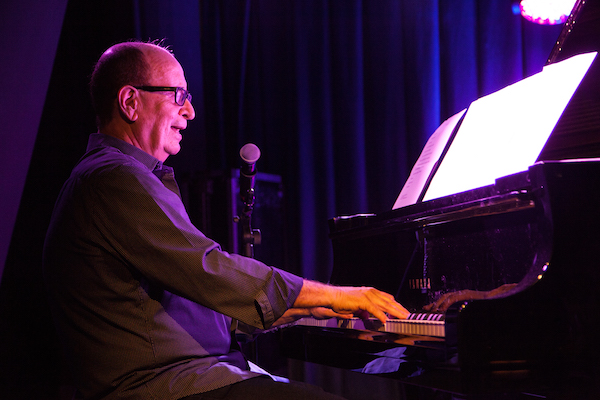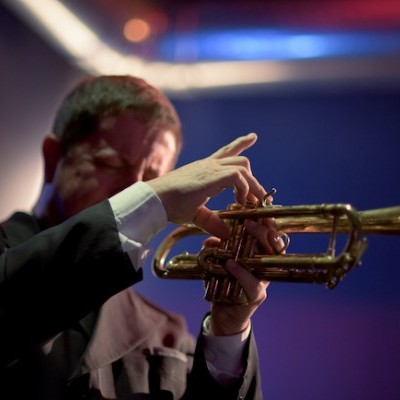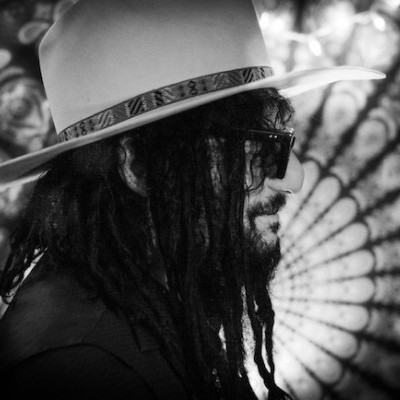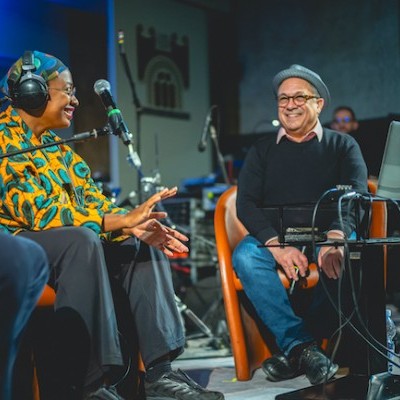Jul 9, 2024 11:35 AM
Trumpeter, Educator Jim Rotondi Dies at 61
Jim Rotondi, a renowned hard-bop trumpeter, composer and educator, died suddenly on July 7 at a hospital in France. He…

Antonio Adolfo performs at The Blue Note in Rio de Janeiro, Brazil, on Nov. 11.
(Photo: Alexandre Moreira)For all its invigorating musical variety, encompassing everything from Malian blues to French jazz to surreal Serbian party-pop, the recent three-day MIMO music festival in Rio de Janeiro, Brazil, was lacking in one notable genre: samba jazz.
The place to get my samba jazz fix was the recently opened Blue Note-Rio, where pianist/composer Antonio Adolfo and his all-star septet held forth on Nov. 11. The spacious 300-seat club is the Blue Note organization’s eighth international location and its first in Latin America. Located in Rio’s Lagoa district, a wealthy lakefront neighborhood bordering Ipanema and Leblon in the shadow of the Christ the Redeemer statue, its programmers give equal time to American jazz stars like Chick Corea and Chris Botti, and Brazilian icons like João Donato and Sergio Mendes.
Although he may look more like a professor or kindly physician, Adolfo is, in reality, a killer pianist/arranger who combines a light touch with genuine, badass Brazilian swing. A creative force in Brazilian jazz since the 1960s (when at age 16 he first started working as a pianist and arranger with the bossa nova greats), he was recently nominated for a Grammy in the Best Latin Jazz Album category for his 2017 release Hybrido–From Rio To Wayne Shorter (AAM). (The album was the subject of a 4½-star review in the July issue of DownBeat.)
Adolfo’s band includes some of the most respected jazz musicians in Brazil: Jesse Sadoc (trumpet and flugelhorn), Serginho Trombone (whose name says it all), Marcelo Martins (tenor/soprano saxophones, flute) and the ace rhythm section of Lula Galvão (guitar), Jorge Helder (bass) and Márcio Bahia (drums). They played a seamless blend of samba and post-bop jazz that is simultaneously vintage and timeless.
The group’s opening statement, Benny Golson’s “Killer Joe,” presented a kind of template for the combination of hard-bop with samba. Following high-octane horn solos on Adolfo’s sinuous “Cascavel” (the name means “rattlesnake”), his piano solo displayed his penchant for percussive rhythm playing. His unique arrangement of “All The Things You Are” employed a few choice substitutions that added a haunting, bittersweet quality to a tune that might otherwise seem overly familiar.
He followed up with Horace Silver’s “Song For My Father.” It’s not much of a stretch to play the Latin-tinged standard as a samba; in fact, Silver was a frequent visitor to the jazz clubs of Copacabana. The arrangement, full of invention, charisma and jazz samba history, included a trombone solo by Serginho with lovely legato lines full of passion. Adolfo followed with a percussive solo reminiscent of Silver himself, at one point quoting Donato’s classic tune “Amazonas.”
The band performed three tunes from Adolfo’s powerful recent album Hybrido–From Rio To Wayne Shorter: “Prince Of Darkness,” “Footprints” and “Speak No Evil,” the latter featuring scintillating soloing by trumpeter Sadoc and saxophonist Martins. One wonders if Shorter has heard these versions; they sound, uncannily, as if Shorter had written them as sambas.
Midway through the show, Adolfo introduced a special guest: his old mentor and collaborator Carlos Lyra. Lyra, an elder statesman of bossa nova, still sings beautifully; he’s a bit like a Brazilian Charles Aznavour, and sang with the same magnetism and savior faire as the French balladeer. He performed a tender song he wrote back in the music’s heyday with the great poet and lyricist Vinicius de Moraes, “Sabe Você.” It was an “only in Rio” moment.
Adolfo and company closed with his instantly recognizable tune “Pretty World” (known in Brazil as “Sá Marina”), which was a worldwide hit for Sergio Mendes as well as being covered by Stevie Wonder. The tune prompted a Carioca friend to remark, “This music is so reminiscent of Rio in the 1960s.” It was the nostalgic sound of a sophisticated, romantic Rio that may exist more in people’s hearts than in the messy reality of modern Brazil.
To read a DownBeat article on the 2017 Grammy nominations, click here. To see a complete list of the nominations, visit the Grammy website. DB

Jim Rotondi was acclaimed for his wide, round trumpet tone, remarkable virtuosity and assured swing.
Jul 9, 2024 11:35 AM
Jim Rotondi, a renowned hard-bop trumpeter, composer and educator, died suddenly on July 7 at a hospital in France. He…

Charles Lloyd, seen here at the 2024 New Orleans Jazz & Heritage Festival, makes DownBeat Poll history!
Jul 11, 2024 12:23 PM
The incomparable Charles Lloyd swept the 72nd Annual DownBeat Critics Poll, becoming the first artist ever to earn…

“Being president of Blue Note has been one of the coolest things that ever happened to me,” Was said. “It’s a gas to serve as one of the caretakers of that legacy.”
Jun 4, 2024 12:21 PM
Sitting with Don Was is a comfortable and unhurried exercise. He may seem slightly reserved at first, but ideas and…

“She reminds me of my childhood and makes we want to cry,” Cécile McLorin Salvant, pictured here with writer Ashley Kahn, said of Dianne Reeves.
Jun 11, 2024 12:31 PM
Italy’s Umbria Jazz Winter is one of those rare annual festivals that not only coincides with a major holiday —…

Maria Schneider said of Decades, her new compilation release: “I just wanted to create something, put it in a beautiful box and say, ‘Look at what we did.‘”
Jun 18, 2024 12:00 PM
Maria Schneider opened the sleek black box and placed it on a coffee table in her Manhattan apartment. Inside lay the…